Feline ringworm is a group of fungal infections that affects the skin of animals and is often contagious to humans. Sometimes, the disease spreads to the claws and fur. The disease is more common in animals that regularly walk outside. The leading causes of lichen in cats are an extended stay in an environment with harmful microorganisms or interaction with an infected animal.
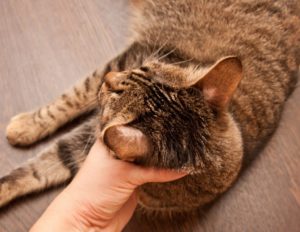
The disease is caused by harmful fungal microorganisms that can remain active for up to two years. Once in a humid and warm environment, these microorganisms can rapidly multiply on the skin and fur of pets. They can also linger on furniture, mattresses, carpets, window sills, and other surfaces where an infected animal spends time. Like other infectious diseases, lichen has an incubation period and may not show symptoms initially. If the pet’s immune system cannot fight off the microorganisms, the first signs of the disease may appear as spots on the skin.
The main signs of lichen in cats:
- Hair loss outside of shedding season
- Formation of spots and crusts on the skin
- Constant itching and scratch marks on the skin
- Presence of dandruff
- Slow fur growth after shedding.
Types of lichen in cats:
- Shearer – the most common type of fungus, characterized by hair loss in the affected area. An additional sign is a white coating similar to dandruff (usually in the ear area). In addition, you can notice broken hairs around the wound. If the itching is severe, the cat may tear the affected skin with claws until it bleeds.

- Pink (Zhiber’s lichen) occurs when a pet is infected with a herpes virus and is characterized by an extensive lesion of the skin and several small spots with a pink rash. This dangerous disease takes longer to cure than others. It may go away after increasing immunity by including microelements and vitamins essential for normal functioning in the pet’s diet.
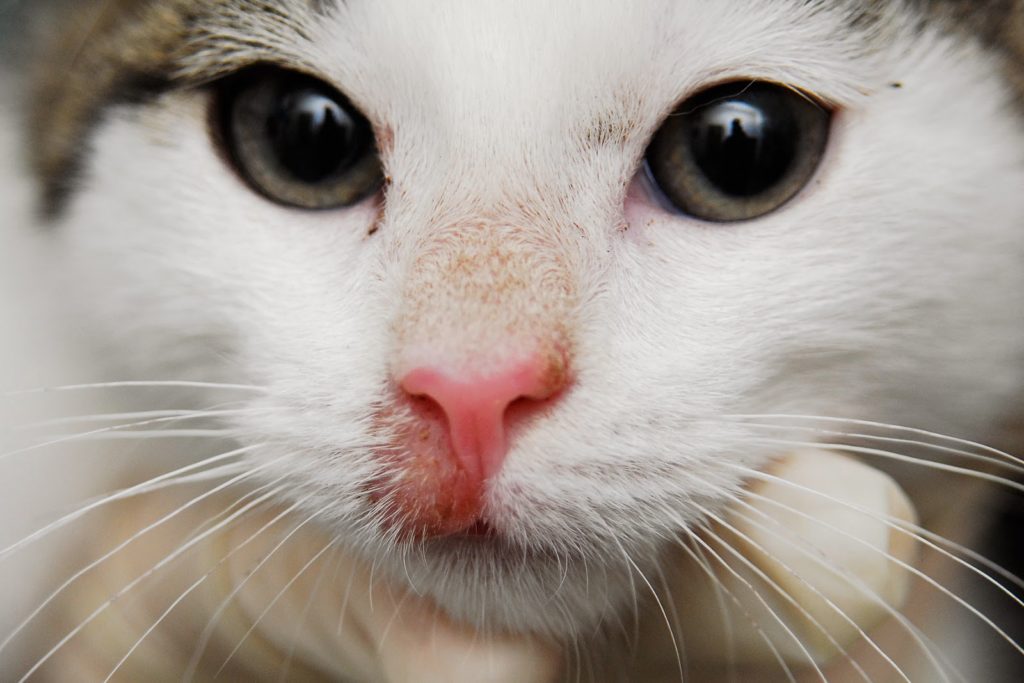
- Pityriasis (multi-colored) usually appears in pets with oily skin in the summer, when the body has too much vitamin D. In this case, only the upper layers of the skin are affected, resulting in the formation of pink or light brown oval spots with dandruff on the body.
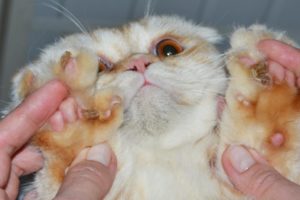
- Weeping is a dangerous disease for purrs. It is not a fungal infection and cannot be transmitted to humans. Weeping appears as red spots with watery blisters. It can occur due to hormonal imbalance, allergies to inappropriate food, weakened immunity, or infection with parasites.
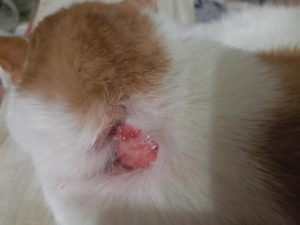
- Red flat—skin damage with terrible red lumps. It occurs when infections or parasites disrupt the immune system. Several tiny spots can form a sizeable painful wound if treatment is not started in time.
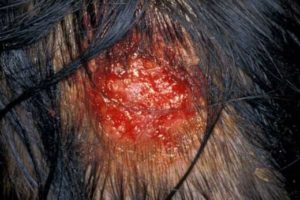
How to cure ringworm in a cat?
In addition to urgently seeking professional help after detecting symptoms of lichen in a cat, measures should be taken to disinfect the premises and furniture in the house with which the animal has been in contact. Things and clothes are washed and ironed with a hot iron. It is better to temporarily isolate the pet in a separate room during treatment. Treatment of lichen in cats is more effective when combined with different medications.
Treatments for ringworm in cats:
- Oral. These capsules or tablets are prescribed as a last resort during an exacerbation of the disease with severe damage to the skin and claws. The most effective oral medications include:
- Fluconazole
- Itraconazole
- Griseofulvin.
It is better to entrust the selection of the drug and its dosage to a veterinarian since most anti-lichen tablets intended for humans have powerful side effects.
- Local preparations. The most effective ointments, sprays, creams, and drops include:
- Fukortsin – a combined agent that kills fungus and has an antiseptic effect. It is bright crimson and is available in liquid form for topical use. The composition contains fuchsin, boric acid, and phenol. After treating the skin with force, special creams or ointments can be applied to enhance the effect.
- Miconazole – cream, spray, tablets, or gel for the treatment of fungal diseases.
- Clotrimazole – antimicrobial spray, cream, or tablets for ringworm and pityriasis versicolor, as well as other types of fungus. The drug is intended for humans but can also be used for animals. Recovery begins 5-7 days after the start of use.
- Fungin is an antifungal drug based on propolis and clotrimazole, which are available in the form of sprays or drops. Reduces inflammation and accelerates healing of damaged tissue.
- Lamisil and Exoderil – light creams with antifungal and anti-inflammatory properties. It is advisable to use it for minor skin lesions.
- Thermikon – external gel, cream, spray, or solution. The positive result of the fight against lichen is noticeable already on the first day of treatment.
- Sanoderm – an antibacterial, antifungal, and anti-inflammatory agent for animals based on clotrimazole.
- YAM – a combined acaricidal and antifungal drug in the form of an ointment. The base composition is sulfur, salicylic acid, creolin, and tar.
- Imaverol – a concentrated antifungal emulsion for bathing, which contains enilconazole.
Before applying topical products, a plastic collar is placed on the animal. This will prevent toxic substances from being licked from the fur, which can lead to kidney failure. The hair near the affected areas is clipped for convenient application of ointments. It’s better to cut off the hair entirely for cats with long hair, for example, Persian or Angorait.
- Shampoos. Antifungal shampoos should be used only for extensive lesions, a couple of times a week for a month and a half. These shampoos usually contain miconazole, enilconazole or ketoconazole. The most common shampoos are Sebozol and Nizoral.
- Vaccines. Vaccines effectively treat pets against lichen and prevent disease. The most popular vaccination medications include Vakderm, Polivac, and Microderm.
- Vitamins and immunomodulators. These are necessary to assist the pet’s body in fighting the disease’s causative agent and normalize the immune system’s functioning.
- Folk remedies. As for treating deprivation in cats with available folk remedies, some of them are justified only at the initial stage. For example, if you treat the affected areas twice daily, solid oil will have the expected effect for five days. Salicylic, sulfur, and zinc ointments, as well as tar soap, have also worked well. Other folk remedies (sulfuric acid, gasoline, brilliant green, iodine) may be not only ineffective but also unsafe for the health of a furry pet, especially if it is a pregnant kitten or an elderly cat.

The effectiveness of drugs largely depends on the animal’s barrier immunity, so you should consult a veterinarian before choosing a drug. The method and duration of treatment for the disease depends on the stage of lichen in the cat and is determined individually in each case.
Video: how to treat lichen in cats




